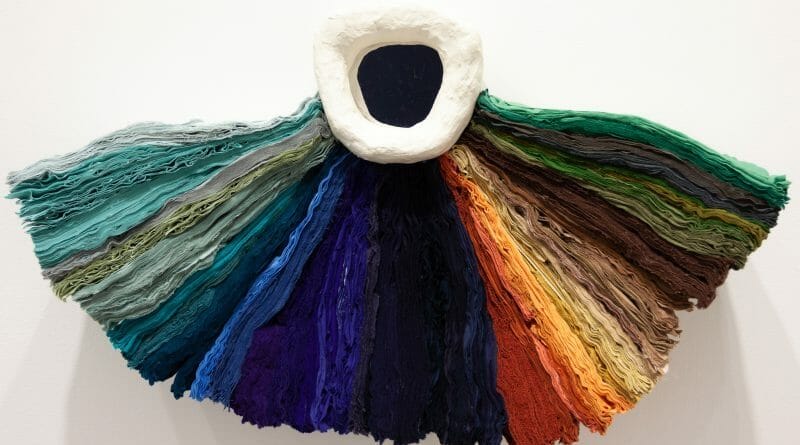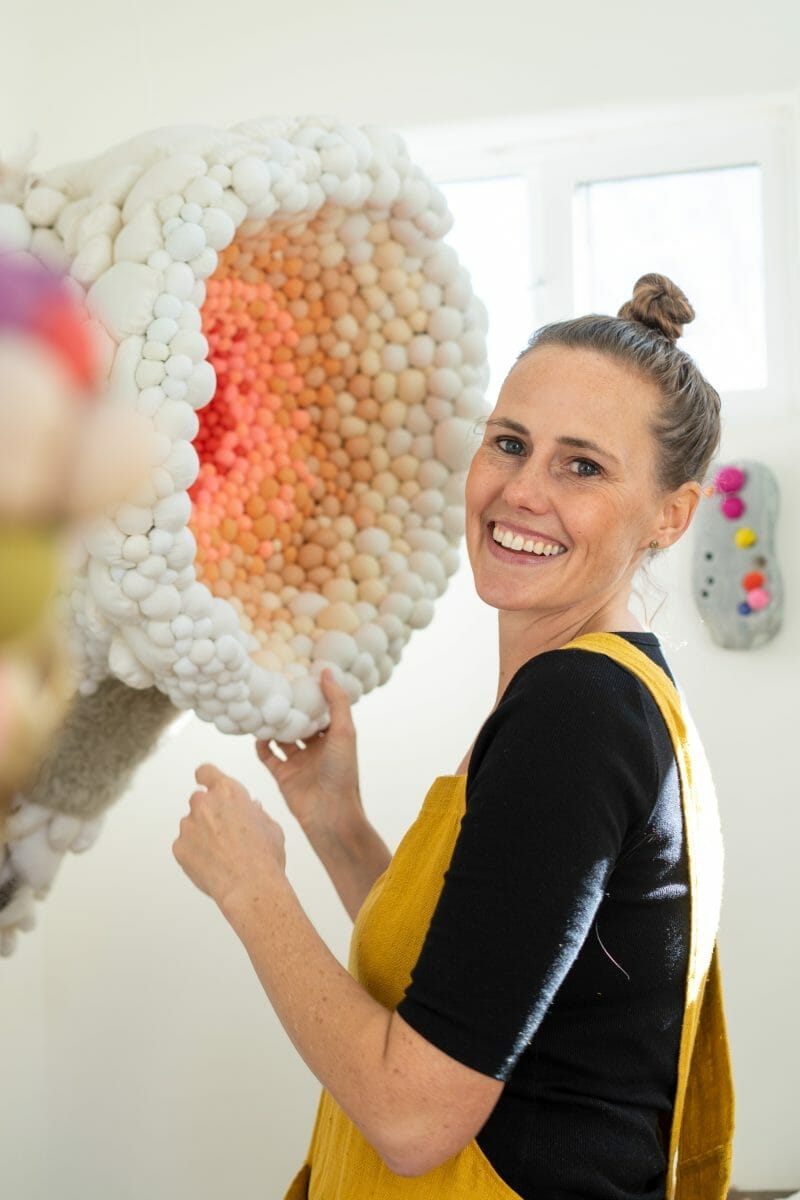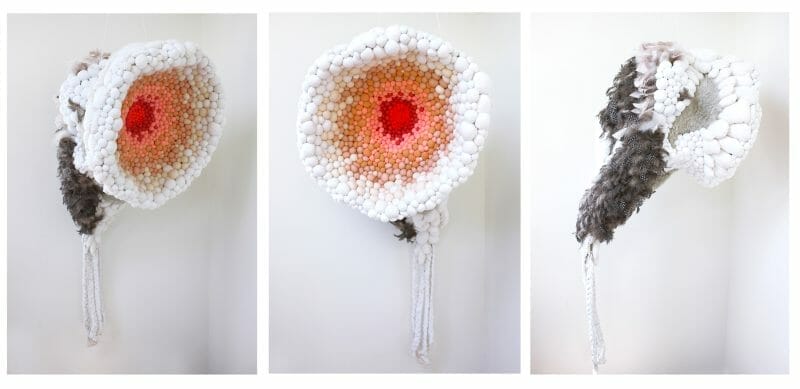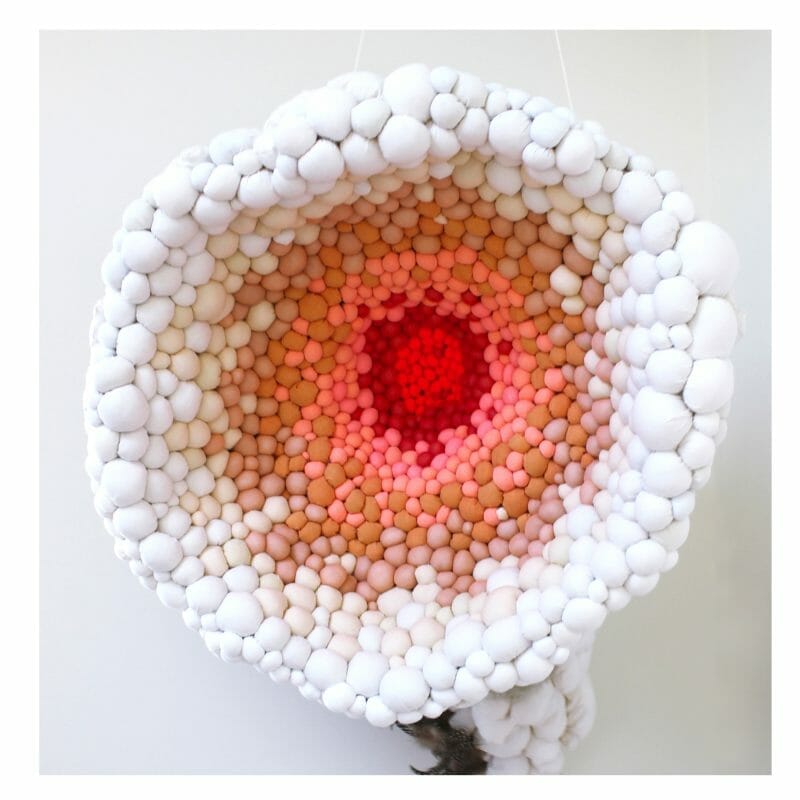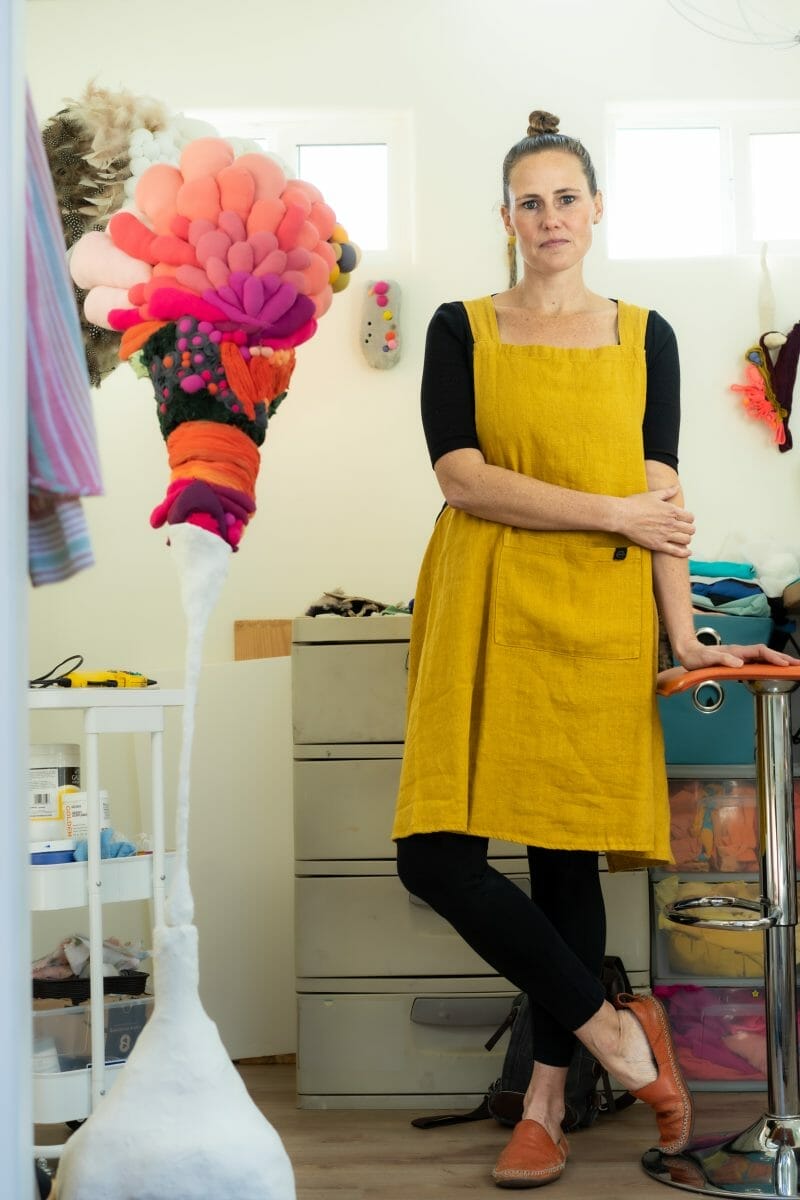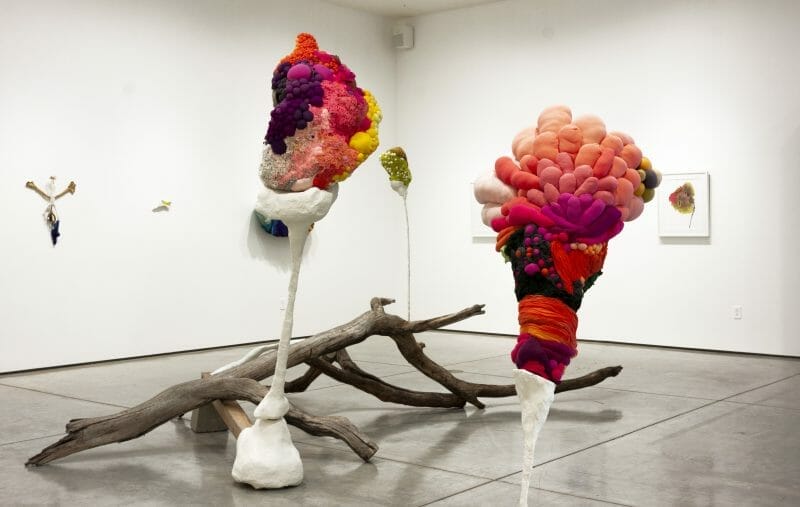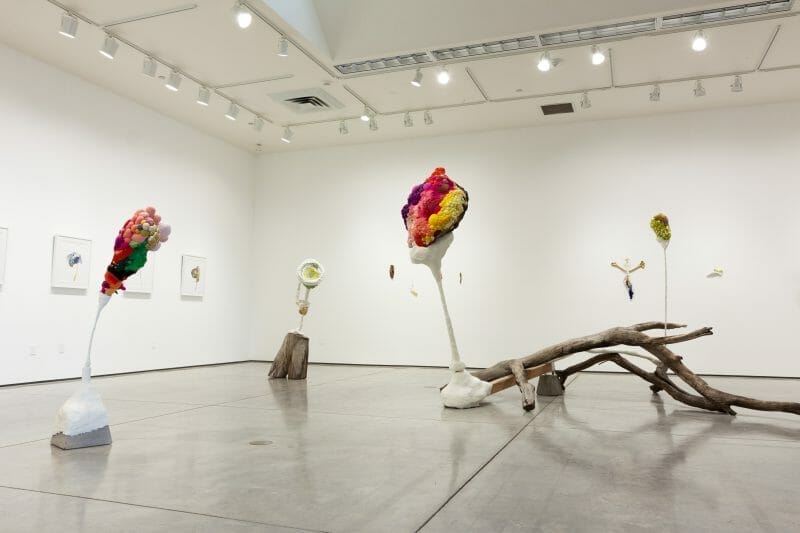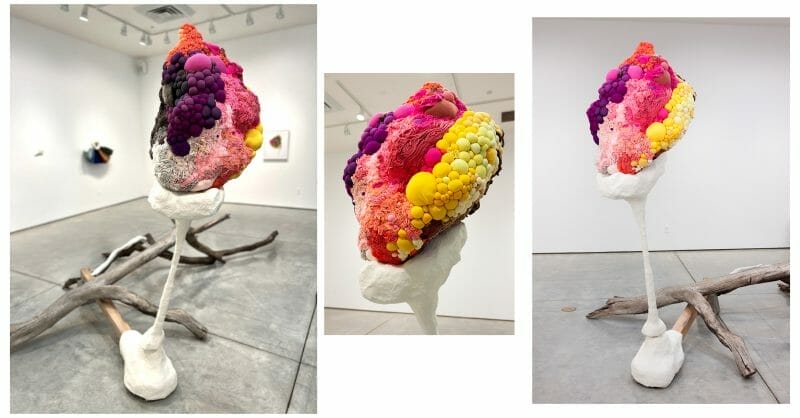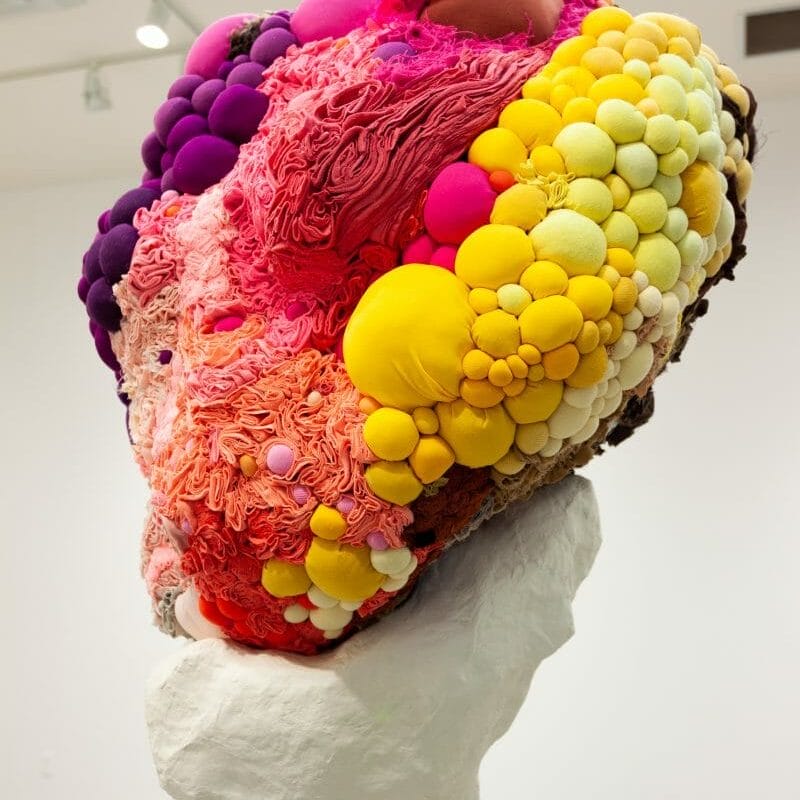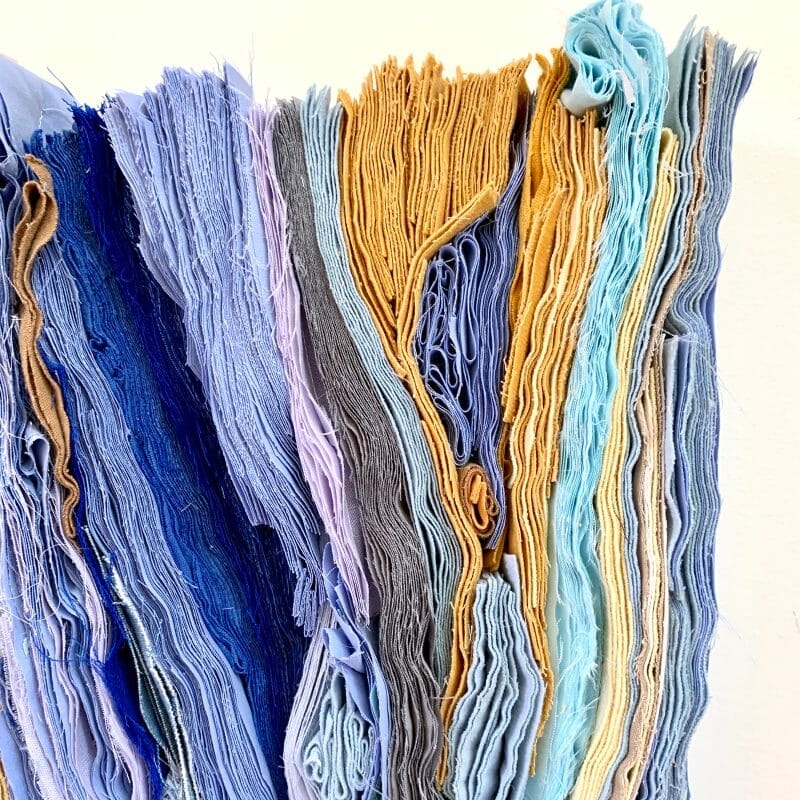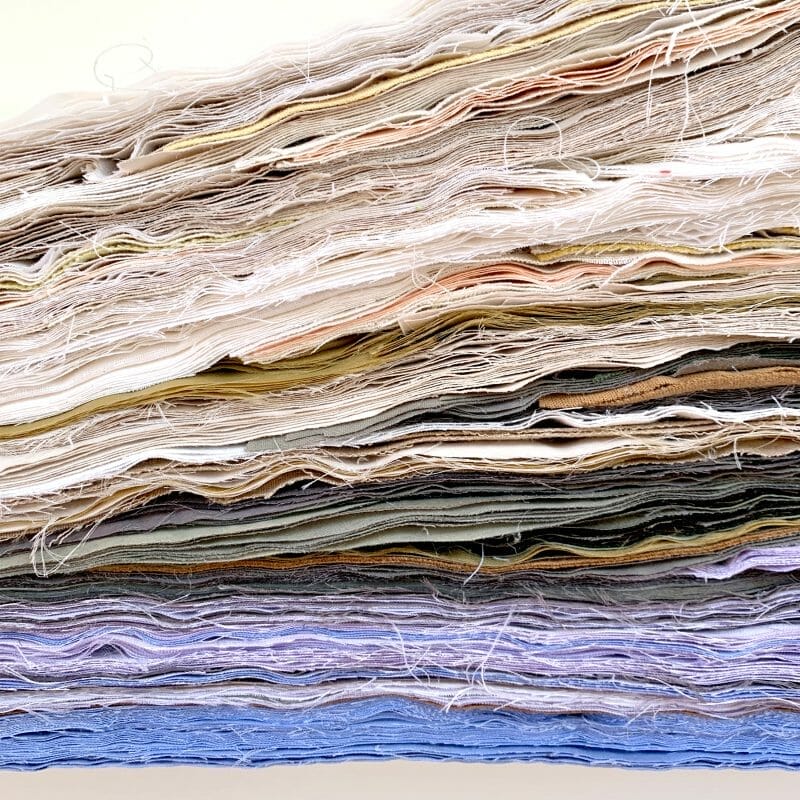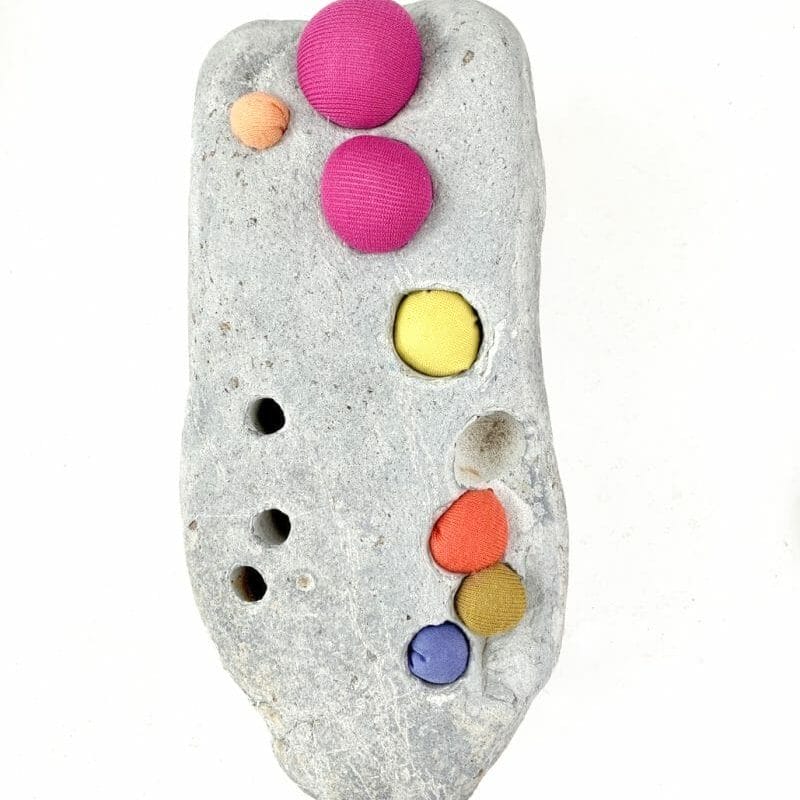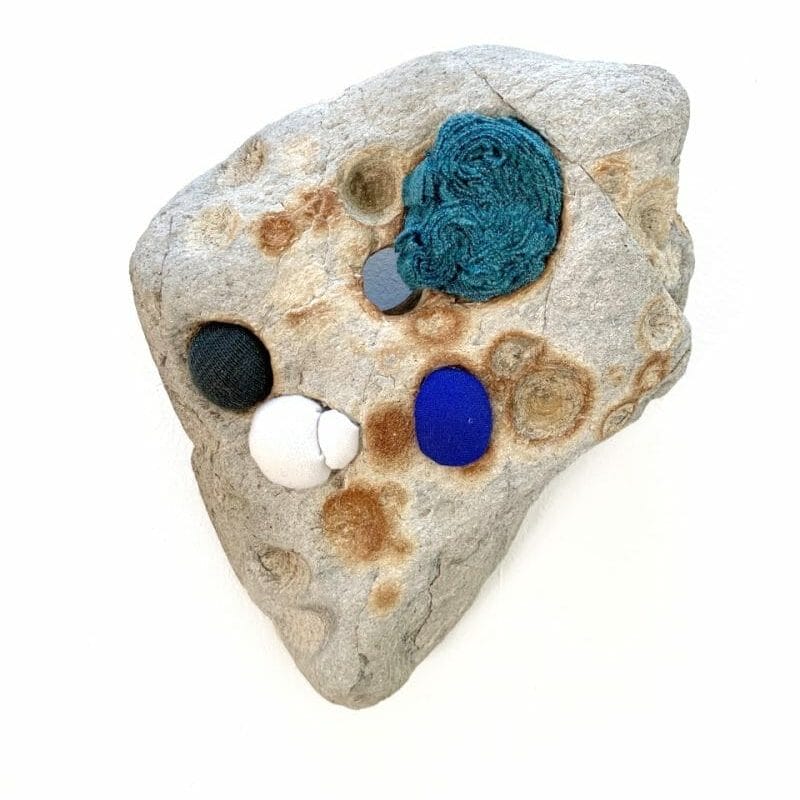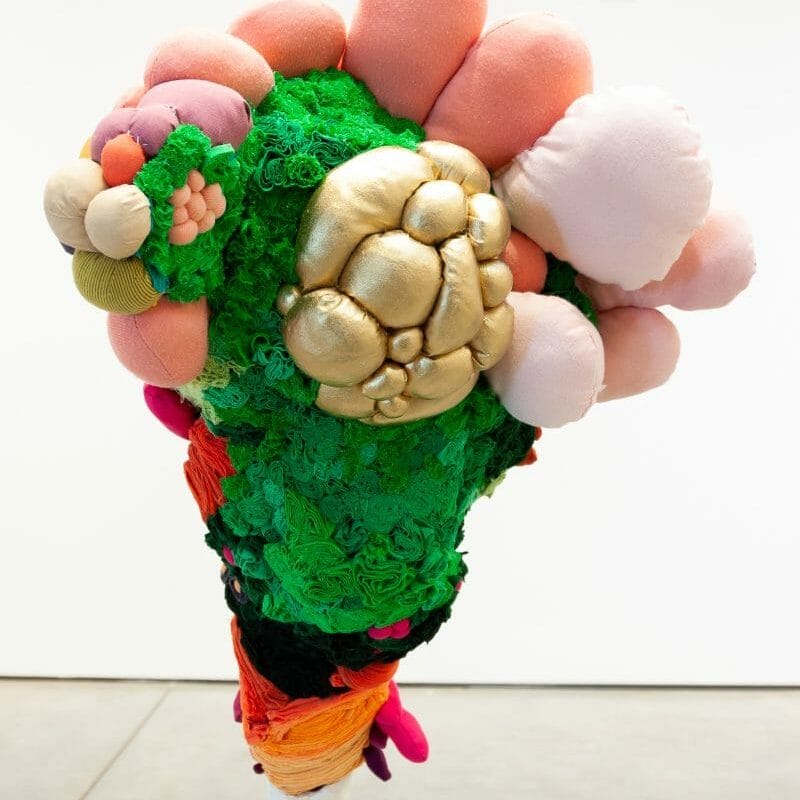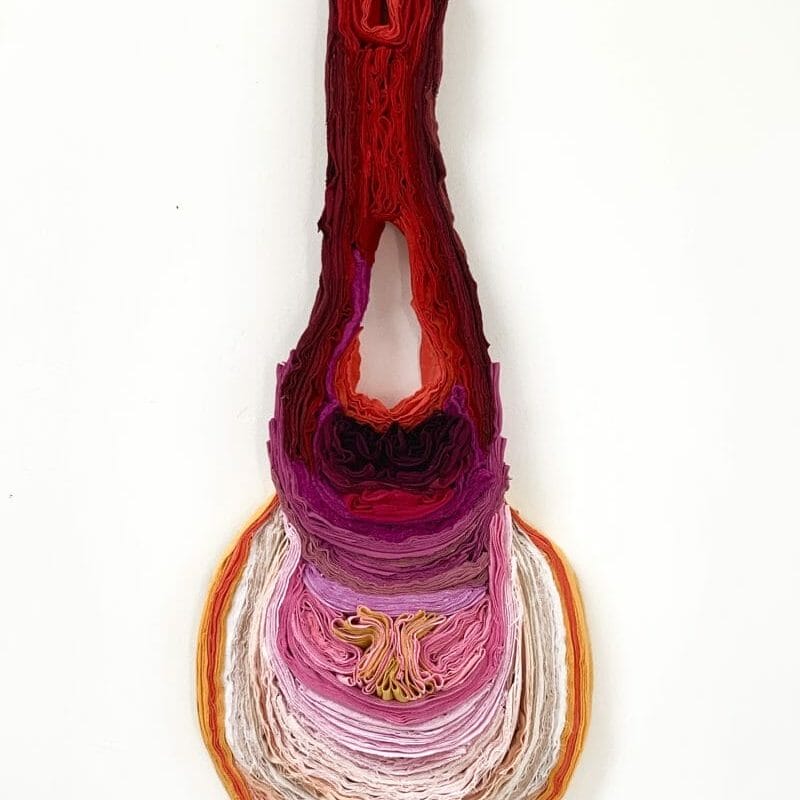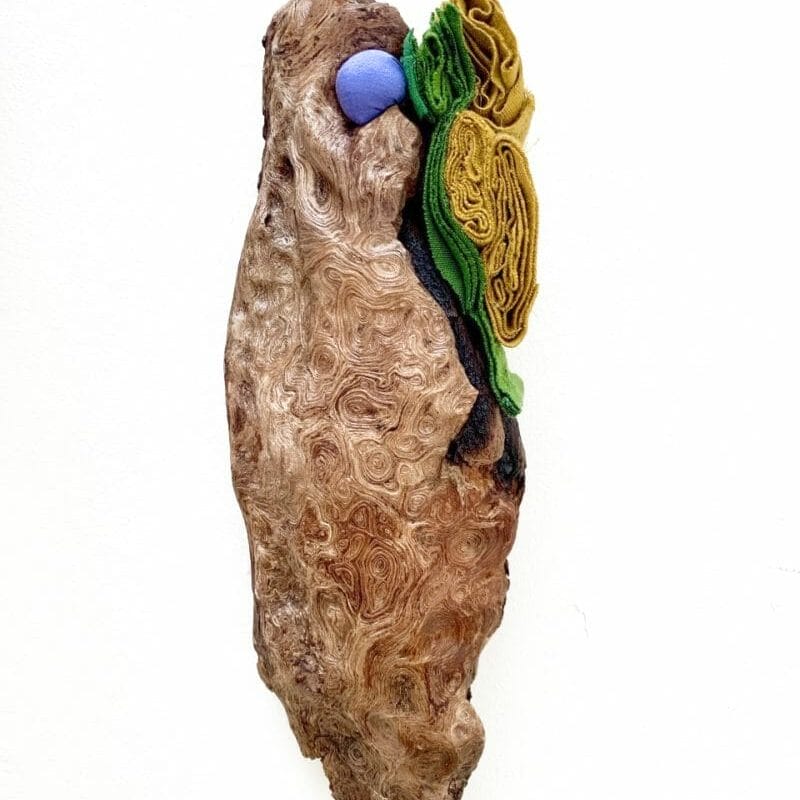Sommer Roman
*Foto in evidenza: We are Here to Self Reflect, 2022, fabric, paper clay, acrylic paint, mirror, 22” h x 39” w x 7.5” d, ph. cr. Sommer Roman, copyright Sommer Roman
Con una laurea conseguita presso l’Università della California, Santa Cruz e un Master in Belle Arti, l’artista multidisciplinare originaria di Santa Clara (CA), Sommer Roman, crea opere dalle forme evocative e non convenzionali che nascono a partire da materiali semplici associati all’uso quotidiano, come i tessuti di recupero, che l’artista manipola, destruttura e ricostruisce a formare ibride figure astratte.
Roman ha recentemente esposto un nuovo corpus di lavori nella mostra personale dal titolo Nobles Among Us, proponendo una rilettura del rapporto uomo-natura che si ispira ai temi dell’”Ecologia poetica” (Poetic Ecology) del biologo e filosofo Andreas Weber. Una relazione di reciprocità fisica, ma anche animistica, lega intimamente l’uomo alla Terra e agli altri esseri viventi al di fuori e in contrasto con i principi dell’individualismo affermati dal mito del progresso. La vita è interconnessione, inter-essere, innata compenetrazione e trasformazione tra esseri viventi.
Da queste riflessioni nascono le opere di Nobles Among Us, figure ibride e curiose che rappresentano il desiderio di restituire all’uomo il posto che gli spetta in un equilibrio naturale che non sacrifichi l’alterità e la nobiltà degli altri esseri viventi.
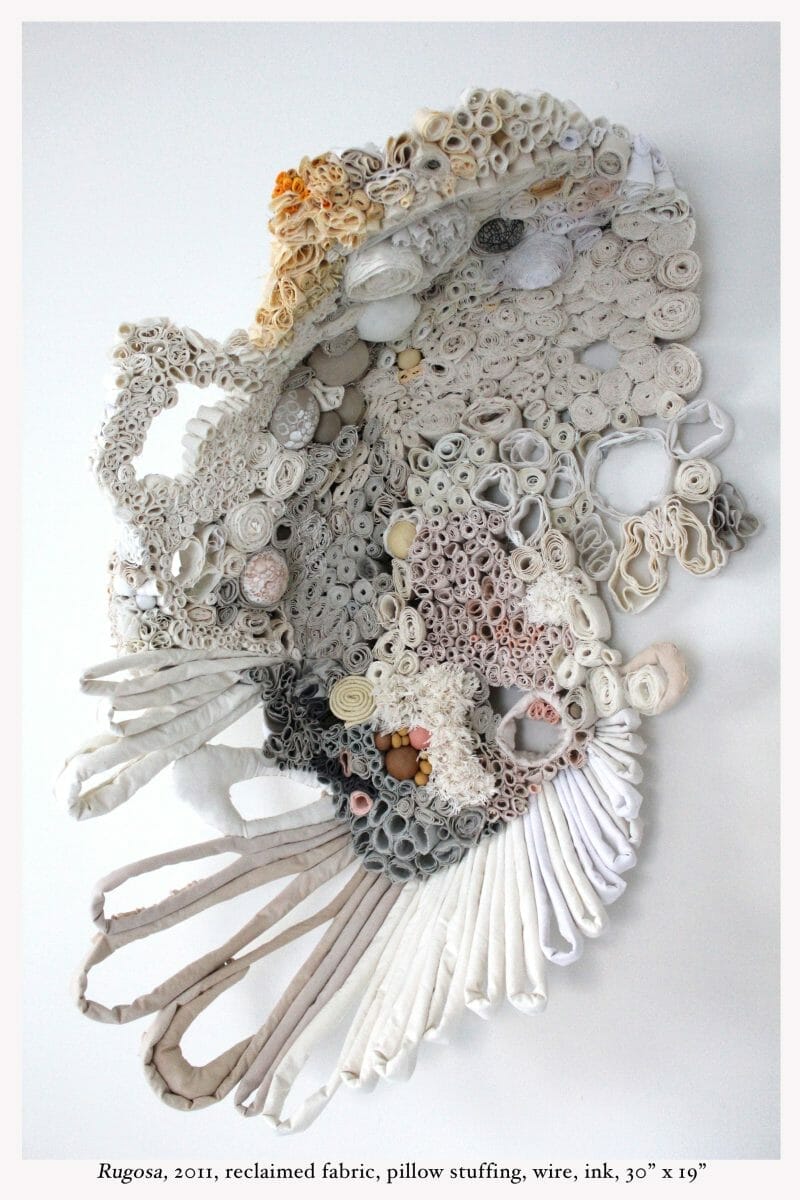
How did you approach art and what was the path that contributed to your artistic formation? When and why did your interest in textiles begin?
I’ve been interested in art and making things with my hands from as young as I can remember. I do not come from a family of fine artists but my mother and grandmother did introduce me to textiles by teaching me basic sewing and crocheting when I was young. I remember making homemade pillows and attempting to make clothes at a very young age.
As for school, I didn’t initially specialize in art as an undergraduate but I went back to school for art at age 30. I took all of the foundation art classes and just loved every second of it. In my 3D design class I was given an assignment to make an abstract sculpture using fabric. This is when I began experimenting and manipulating fabric in basic ways (folding, rolling, stuffing…etc.) to build up three dimensional shapes. I was fascinated by the possibility of forms and textures through my non-traditional approach to textiles. I felt that I discovered an endless playground for my hands. This really marked the beginning of my work in soft sculpture. From there I created an entire body of work, which was my portfolio that got me in to graduate school (2012 -2014). I haven’t stopped making and exhibiting since 🙂
My approach to art is process-centric Most of it isn’t fully pre-meditated. I loosely sketch ideas but primarily I allow the colors and materials to lead me and dictate a lot of the process. Through intuitive & laborious hand-made processes the materials are manipulated, broken down, cut, bound, braided, sewn, glued, folded, built up, and reconstructed to create evocative new forms.
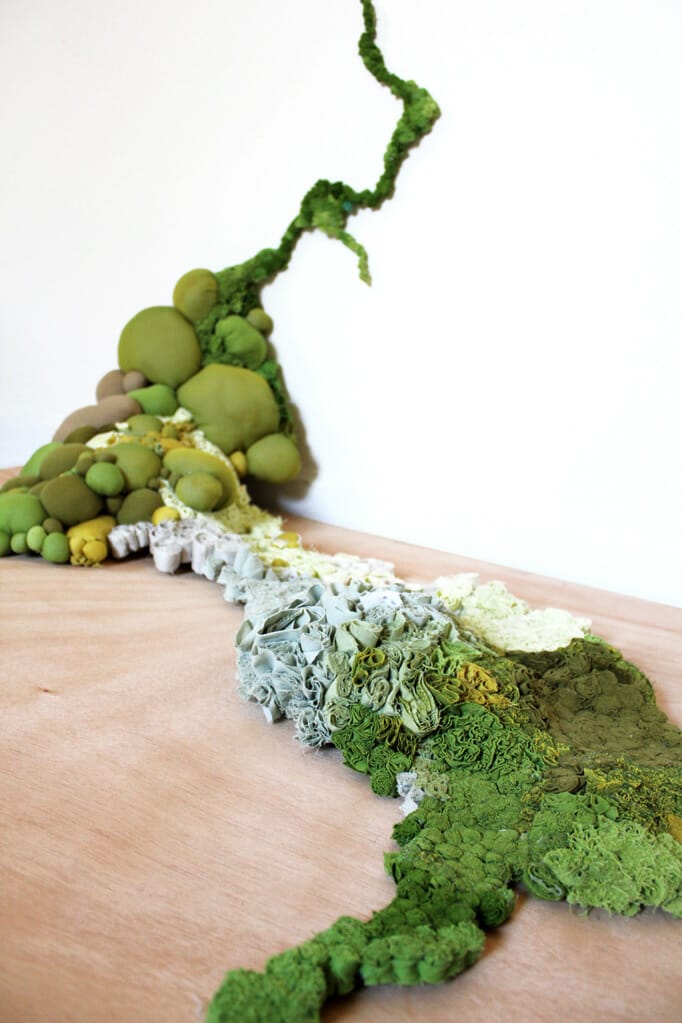
What is your main source of inspiration?
My main sources of inspiration are the natural world, color, everyday life, human experience and how we relate to one another. In my work, I’m continually exploring the interdependence between plant, animal, and human. A question that drives a lot of the work is “How do we know ourselves and understand the human experience in relation to the domestic & natural worlds around us?
Within your research path, what role do the identity and nature of the materials used to create the work play?
As fabric and textiles are something integrated in to everyone’s daily life, they are inherently a relatable and universal medium. I love aspect to this medium of textiles.
In my work, I use solely post-consumer, used clothings & linens. It’s important for me that my materials have already been part of someone’s body, home, and life. In this way, the materials carry an invisible memory, story, and a link to the human experience (which is a major theme my work).
I am also committed to the ecological aspect of reusing existing materials (instead of purchasing them new). There is so much surplus of discarded clothing, that I like giving the used fabrics new life and thus participate in a process of regeneration.
What kind of habits do you have when you start a new project/work? What does a typical day in your studio look like?
When I’m preparing to begin new work, I begin by organizing and cleaning my studio. The space needs to feel cleansed of older work and mess so that I can think and make in a clearer state and space. Then I usually review past notes as well as write and sketch new ideas that are brewing. The next step is gathering the materials. From there, it’s simply time to let my hands go and just begin working in a playful and intuitive way, just allowing my ideas and sketches come in to play in a more natural and unconscious way (through process and the work of the hands).
A day the studio is typically comprised of a multitude of tasks not in any particular order: writing or sketching in my sketchbook, working on a sculpture, adding another layer of paper clay to an armature, answering emails, creating an instagram post, taking a tea break, reorganizing my stacks of fabrics…etc.
Can you tell us about the themes you explore in the works that were exhibited in your solo exhibition Nobles Among Us; material thoughts on a poetic ecology at HJ Miossi Gallery?
In this body of work, I riff off of Descartes’ famous words, “I think, therefore I am”, by using the locus of the head as a starting point to question this site as the quintessential source of intellect & knowledge, and consequently a rationale to seeing ourselves as above and apart from that which is non-human. To counter, I offer playful, biomorphic, and tactile forms interwoven with elements of body, nature, home, & beast, to implicate a multitude of sources for knowledge, self understanding, and enlightenment.
Inspired by what biologist & philosopher Andreas Weber calls a “Poetic Ecology,” it’s an artistic exploration of an idiosyncratic ecosystem that follows a new logic that “restores the human to its rightful place within “nature”— without sacrificing the otherness, the strangeness and the nobility of other beings.” Rather, it aims to collapse the old orders where humans are superior, and instead, braids us (humans) back into rightful kinship and interconnectedness with all of life.
The work aims to evoke a sense of wonder about life and our relationship to “other…” and furthermore, recalls the essential mutuality between plant, animal, and human that is core to our aliveness.
Life Lines in Blue Hues. Can you tell us something about this work, how it was born and what it’s about?
I approached this piece as an homage to Elizabeth Wentworth Roberts (E.W.R), an under-recognized American painter (1871- 1927).
As a starting point I selected one of E.W.R’s paintings. I spent time visually absorbing and meditating on it. My intention was not to merely create a direct translation out of fabric but to respond from an intuitive place. Instead of exactitude, I gave myself permission to absorb the work, play with it, and create pieces that were in response & in dialogue with her painting.
I translated, interpreted, altered, and rotated the felt lines, colors, and shapes from her painting… which resulted in this abstract relief sculpture. I use the many dense layers of fabric as an abstract reference to the seen and unseen layers of the human, the life experience, and the interior life of E.W.R. In this way, it’s an homage not just to her painting but to the woman she was and the life she lived… as those are inextricably linked to the art she made.
Approaching my textile work as a response to existing artwork was new for me. It was a way to connect with an important yet under-recognized female artist that I never knew myself. I really enjoyed paying homage to E.W.R. and her work by taking the time to create contemporary works to act as an echo or arrow pointing back to her work & thus creating an invisible dialogue between two female artists from different generations.
*My other piece, “Life Lines in Neutral” is the other piece I created after one of E.W.R’s paintings .
What projects do you have going on? What are you working on at this period?
I’m gradually building a new body of work. The concepts are developing as the work materializes and evolves. With this body of work, Ive been using lots of dense layering of fabrics in conjunction with forms created in paper clay. The paper clay forms allude to sheltering spaces, nooks, or holes/portals. I’m thinking of them as psychological, poetic landscapes that speak of the hidden and dense layers of the hidden human experience, like compacted underground strata in the land.
Other current and upcoming projects/exhibitions…
I’m currently showing two pieces in the group exhibition, Conceptual Stitch, at the Concord Center for the Arts in Massachusetts, USA.
In December (2022) I’m in a group exhibition themed around fast fashion at the San Luis Obispo Museum of Art (San Luis Obispo, CA, USA)
In the Fall of 2023, I’ll be having a small solo exhibition at the Santa Barbara Architectural Foundation. (Santa Barbara, California, USA)
I’m simultaneously preparing to teach some courses starting this Spring at one of my local Universities.
